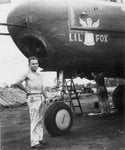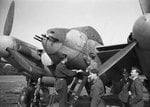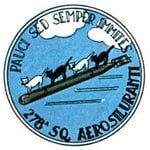Jabberwocky
Tech Sergeant
The Hs-293 was countered by Allied developments in jamming and spoofing
"The Allies also introduced electronic countermeasures against the Kehl-Strassburg control system. One system was a broadband jamming transmitter that simply disrupted the control transmission with radio noise. Another system was more subtle, "spoofing" the bomb by sending false control signals to the Strassburg controller that slammed the weapon's control surfaces to an extreme position, causing it to stall and tumble, or descend in an aimless spiral. When the Luftwaffe attempted to attack the Allied fleet during the Normandy landings in June 1944, they were unable to overcome Allied fighter defenses. What few glide bombs they dropped were ineffective due to jamming and spoofing. The Hs-293A and Fritz-X were no longer useful weapons."
That said, they did hit and sink a number of Allied (and Italian) ship during the war.
The Allies also developed standoff and precision guided weaponry. The ASM-2 BAT comes to mind, it was a S-band active radar guided glide bomb.
"The Allies also introduced electronic countermeasures against the Kehl-Strassburg control system. One system was a broadband jamming transmitter that simply disrupted the control transmission with radio noise. Another system was more subtle, "spoofing" the bomb by sending false control signals to the Strassburg controller that slammed the weapon's control surfaces to an extreme position, causing it to stall and tumble, or descend in an aimless spiral. When the Luftwaffe attempted to attack the Allied fleet during the Normandy landings in June 1944, they were unable to overcome Allied fighter defenses. What few glide bombs they dropped were ineffective due to jamming and spoofing. The Hs-293A and Fritz-X were no longer useful weapons."
That said, they did hit and sink a number of Allied (and Italian) ship during the war.
The Allies also developed standoff and precision guided weaponry. The ASM-2 BAT comes to mind, it was a S-band active radar guided glide bomb.




